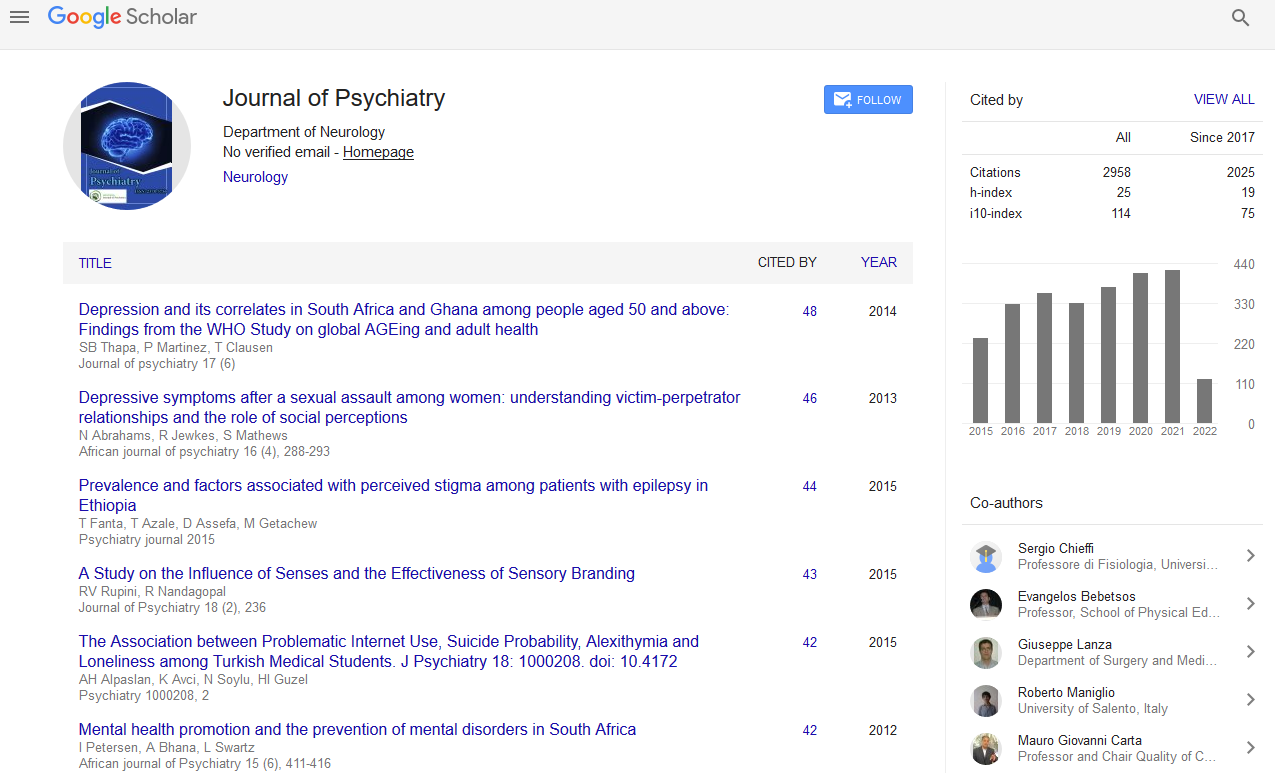PMC/PubMed Indexed Articles
Indexed In
- RefSeek
- Hamdard University
- EBSCO A-Z
- OCLC- WorldCat
- SWB online catalog
- Publons
- International committee of medical journals editors (ICMJE)
- Geneva Foundation for Medical Education and Research
Useful Links
Share This Page
Open Access Journals
- Agri and Aquaculture
- Biochemistry
- Bioinformatics & Systems Biology
- Business & Management
- Chemistry
- Clinical Sciences
- Engineering
- Food & Nutrition
- General Science
- Genetics & Molecular Biology
- Immunology & Microbiology
- Medical Sciences
- Neuroscience & Psychology
- Nursing & Health Care
- Pharmaceutical Sciences
Abstract
Emotional Experience and the Mood-Congruent Working Memory Effect in First-Onset and Untreated Depressive Disorder Patients
Li Mi, Lu Shengfu, Feng Lei, Fu Bingbing, Wang Gang, Zhong Ning and Hu Bin
Using an improved Sternberg working memory paradigm and affective pictures of different valences, this study investigates the emotional experience capability of 22 first-onset and untreated major depressive disorder patients (MDD) compared with the matching 22 healthy control participants (HC) and whether there is a moodcongruent working memory effect. We employed a general linear model analysis of variance (ANOVA) with two-factor repeated measures analysis on the emotional experience capability (pupil diameter changes) and the working memory performance (accuracy). The results show that the pupil diameter changes of positive emotions are significantly greater in MDD than those in HC (p<0.001), and the pupil diameter changes of negative emotions are not significantly different between two groups (p=0.055), which suggest that MDD have a significantly decrease in the ability to experience pleasure (anhedonia). In addition, the results only present that the working memory performances of negative emotions are significantly greater in MDD than those of positive emotions (p<0.05), which indicates that there is a mood-congruent memory effect. Moreover, in MDD, a positive correlation is found between the pupil diameter changes and working memory performances of positive emotions, however there is no correlation between those of negative emotions. Taken together, these results suggest that MDD have a moodcongruent memory effect and anhedonia, and the mood-congruent memory effect may be due to the decreased memory performances of positive emotions (a decrease in the ability to experience pleasure), but not those of negative emotions increased. This study not only illustrates that the core symptoms of depressive patients may be a mood-congruent memory effect and anhedonia but also enriches the connotation of anhedonia as an endophenotype indicator.


